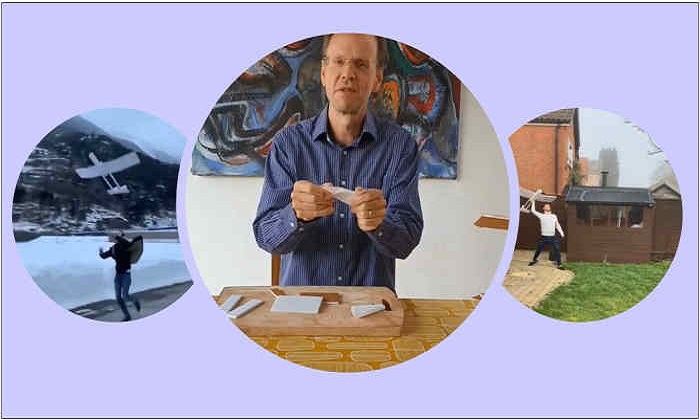MACE students build Drones From Home
24 Nov 2021
When the pandemic hit in 2020, teaching staff faced the challenge of enabling students to complete the practical elements of their course outside of their usual laboratories and teaching spaces.

Here, Dr Ben Parslew, Senior Lecturer in Aerospace Engineering in the Department of Mechanical, Aerospace and Civil Engineering (MACE) tells us more about the innovative tactics the Aerospace Design team employed to provide students with alternative ways of meeting their learning outcomes.
“Prior to COVID, students would work closely with each other in laboratories to complete practical tasks. During the pandemic when lockdowns and social distancing measures were in place, we recognised that this approach wouldn’t be possible with students working from their own homes, often in different parts of the world. To overcome this, we needed to create a strong digital learning environment that connected students. We achieved this by introducing a virtual design environment where students could design their drones online.
“Our platform was an interactive schedule linked to rich media content. We gave students a flight simulator that allowed them to design and test pilot drones online alongside a series of online practical tutorials where students could learn more about the engineering techniques, materials and tools that they would need for this project. To complement the online work, we sent an engineering toolkit to every student to enable them to design, build and test-fly a drone from their own home.
“The technical theme that we set this year was an ethical challenge – designing a drone to deliver an aid package for COVID-19 from the UK mainland to an island in Scotland. Each year we ask students to suggest ways for making the project more engaging and relevant moving forward and this idea was put forward via this process.
“As part of the learning outcomes, students had to demonstrate that they could teach another person to recreate the drone they had built by designing their instruction set so that somebody else could download their design and build the drone themselves.
“Student feedback on the environment and learning style has been extremely positive. Six of our students have gone on to undertake a PhD in Aerospace Engineering as well as becoming mentors on our course working alongside academics and technicians as part of the Aerospace Design team.”
The Drone From Home project was successful at this year’s Institute of Teaching and Learning Teaching Excellence Awards in the category for Flexible Learning and Digital Delivery and the COVID-19 Teaching Environment.
The Aerospace Design team consists of Ben Parslew, Khristopher Kabbabe, Natalie Parish, Melanie Ward, Brian Clancy, Andrew Morris, Samuel Knox, Kwok Cheung John Lo, Dmitrij Usov, Luliu-Cezar Ardelean, Ethan Bond, Thomas Shearwood, Mathew Ellis, William Crowther (pictured) and Christine Jinks.
